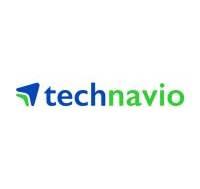Originally published on Technavio:Analysis of the Crystal Oscillator Market in APAC, North America, Europe, Middle East and Africa, South America - US, China, Taiwan, South Korea, Japan - Size and Forecast 2024-2028
The projected growth of the crystal oscillator market is USD 953.33 million, expected to expand at a CAGR of 5.14% from 2023 to 2028. The market's upward trajectory is influenced by various factors, including increasing integration with System-on-Chip (SoC) solutions, the widespread adoption of 5G and 6G networks, and the emergence of Industry 4.0 and industrial automation.
Market Overview
Market Growth Analysis Driver
The pivotal driver of market growth is the escalating integration with System-on-Chip (SoC) solutions. SoC solutions involve IC designs that consolidate all essential components of a computer or electronic system onto a single semiconductor chip. This integration with SoC solutions results in a reduced overall component count on the PCB, leading to cost savings in terms of component procurement, assembly, and manufacturing. This cost-effectiveness is particularly crucial for high-volume applications, where even minor cost optimizations can yield significant savings.
Market Growth and Trends
A prominent trend in the market is the development of high-frequency crystal oscillators. These devices are crucial for generating precise electrical signals at frequencies higher than those produced by standard oscillators. High-frequency crystal oscillators find applications in various sectors such as telecommunications, wireless communication, radar systems, instrumentation, and test equipment. Ongoing research and development endeavors are focused on advancing the technology behind high-frequency solutions.
Market Restraint
A significant challenge impacting market expansion is the rising demand for Micro-Electro-Mechanical Systems (MEMS). MEMS oscillators utilize microfabrication techniques to create miniature mechanical structures on a silicon substrate, enabling high-frequency oscillations with low power consumption and excellent frequency stability. MEMS, being inherently smaller than traditional oscillators, cater to the growing demand for miniature components in space-constrained designs as electronic devices continue to become smaller and more compact.
Market Segmentation By Type
The surface mount segment is poised to hold significant market share during the forecast period. Surface mount crystal oscillators play a crucial role in electronic devices and systems, providing precise timing signals for clocking and synchronization purposes. The proliferation of electronic devices across various industries, including consumer electronics, telecommunications, automotive, industrial automation, and the Internet of Things (IoT), drives the demand for surface mount crystal oscillators.
Crystal Oscillator Market Size
For an overview of the market contribution by various segments, download the PDF sample.
The surface mount segment witnessed a gradual increase in market share, reaching USD 1,816.23 million in 2018. Additionally, the expansion of wireless communication networks, encompassing 5G, Wi-Fi, Bluetooth, and global navigation satellite systems (GNSS), propels the demand for surface mount crystal oscillators used in radio frequency (RF) and wireless connectivity applications. These oscillators provide stable clock signals for RF transceivers, base stations, routers, and satellite communication systems. Thus, the growth of the surface mount segment is expected to be boosted during the forecast period.
Market Segmentation By Application
Crystal oscillators serve as crucial timing references for clock signals in consumer electronics, ensuring precise timing for data processing, communication, display refresh rates, and synchronization of various system components. The demand for accurate timing signals rises as consumer devices become more feature-rich and complex.
Consumer preferences for seamless connectivity, fast performance, and long battery life further drive the demand for high-quality crystal oscillators in electronic devices. Consequently, the demand for crystal oscillators in consumer electronics is fueled by factors such as clocking and synchronization requirements, miniaturization trends, higher performance expectations, energy efficiency considerations, wireless connectivity needs, and multimedia applications. This is expected to boost the growth of the consumer electronics segment during the forecast period.
Regional Overview
Crystal Oscillator Market Share by Geography
For additional insights into the market share of various regions, access a PDF sample now.
APAC is estimated to contribute 53% to the growth of the global market during the forecast period. Technavio's analysts have offered comprehensive insights into the market forecast, detailing regional trends and drivers influencing the market's trajectory throughout the forecast period.
To Learn deeper into this report , View Sample PDF
Additionally, with the growing adoption of 4G LTE, 5G, and IoT technologies in the APAC region, there is a rising demand for high-performance crystal oscillators used in RF transceivers, baseband processors, and frequency synthesizers for wireless connectivity, data transmission, and timing synchronization in mobile devices. Furthermore, APAC countries such as India and China are investing heavily in telecommunications infrastructure expansion and upgrades to support the increasing demand for high-speed broadband internet, mobile data services, and digital connectivity. Thus, these factors are expected to promote the growth of the regional market during the forecast period.
For more information please contact.
Technavio Research
Jesse Maida
Media & Marketing Executive
US: +1 844 364 1100
UK: +44 203 893 3200
Email: media@technavio.com
Website: www.technavio.com/

